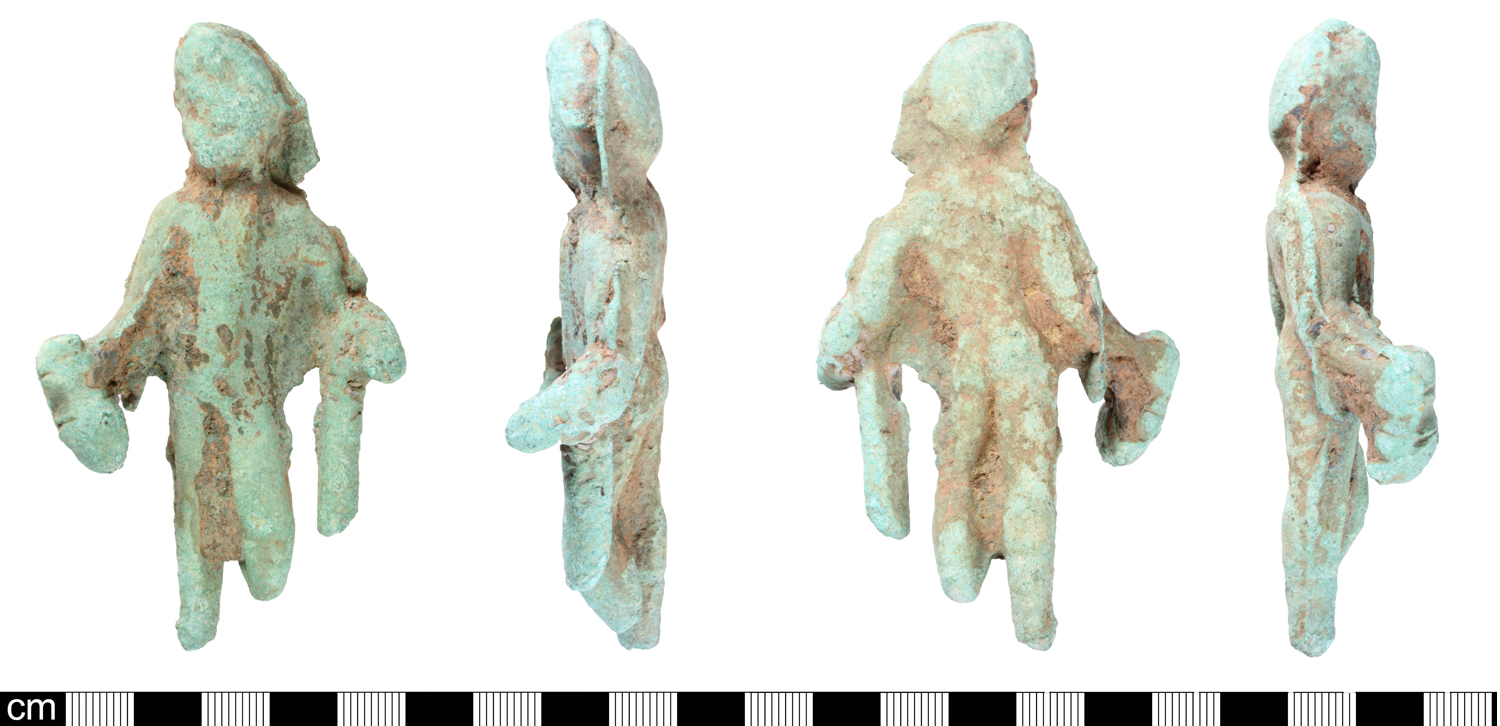
What is it?
A standing male figure dating to the Roman period and made of copper alloy. It is wearing a long cloak or stole draped on its left arm and is holding a thunderbolt in its right hand, and is thought to represent the Roman god Jupiter. The figure is incomplete and unfinished, with casting marks around its edges, and is thought to have been made locally; perhaps discarded unfinished or made specifically to be deposited. Figures such as this may have been used both in temples and in personal shrines.
Where was it found?
It was discovered in the parish of Brompton Regis. While it was not associated directly with any known archaeological site, it was located within a few miles of the Roman fort at Rainsbury. It has been suggested that there may be a relationship more generally between Jupiter figurines and military sites, which generally date between AD55 and AD85 in the South West.
Why is it important?
While there are well known examples of Roman economic activity on Exmoor, such as the ironworking site at Sherracombe Ford, it is rare to find evidence for the adoption of the Roman way of life or religion, Romanitas. This figurine may provide evidence of possible local production and use of figurines representing Roman gods.
Where can I see it?
This item has been recorded by the Portable Antiquities Scheme (or PAS) with the unique identifier SOM-B5638E. You can view the full record for the item on the PAS database. This webpage has been created using information derived from this database record, with permission.
The figurine has been donated to the Somerset Museum Service (accession reference TTNCM: 72/2019) and it is hoped that it will be displayed on Exmoor.